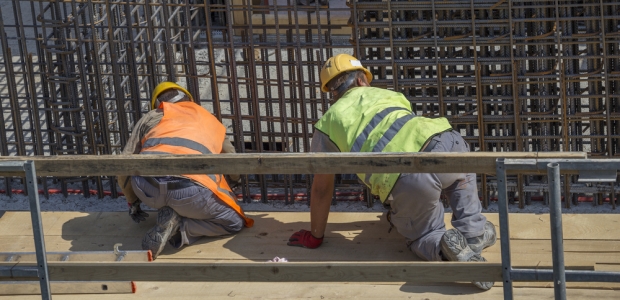
NIOSH Research Can Help Construction Workers Avoid Injury
Construction workers are at high risk for developing MSDs because they are frequently doing manual lifting and material handling tasks, using repetitive motions, and may be exposed to vibrations and inconsistent working conditions.
A blog post from two people at NIOSH -- Emily Warner, MA, an ORISE Fellow in the NIOSH Division of Applied Research and Technology, and Jack Lu, Ph.D., CPE, a Research Ergonomist in the NIOSH Division of Applied Research and Technology and Manager of the NIOSH Musculoskeletal Health Cross-Sector Program -- will be helpful to safety directors at construction firms, because it summarizes recent research the agency has done on preventing musculoskeletal disorders among construction workers.
This is the fourth post about the ongoing research, they write.
Construction workers are at high risk for developing MSDs because they are frequently doing manual lifting and material handling tasks, using repetitive motions, and may be exposed to vibrations and inconsistent working conditions. The authors write that a recent NIOSH study has shown that among 22 major occupational groups, the highest prevalence estimates of both frequent exertion and frequent standing occurred in the construction industry.
NIOSH resources listed and linked to in the post include:
- Application Manual for the Revised NIOSH Lifting Equation
- The NIOSH Lifting Equation app: NLE Calc, a tool to calculate the overall risk index for single and multiple manual lifting tasks. This application provides risk estimates to help evaluate lifting tasks and reduce the incidence of low back injuries in workers.
- Simple Solutions: Ergonomics for Construction Workers, a NIOSH document that outlines simple, inexpensive ways to make construction tasks easier, more comfortable, and better suited to the needs of the human body.
- Workplace Solutions: Reducing Work-related Musculoskeletal Disorders among Rodbusters. NIOSH researchers conducted a field investigation of biomechanical loading when using three common techniques to tie together rebar. Using a power tier that automatically cuts, wraps, and ties the rebar significantly reduced the hand/wrist and forearm movements. The powered device allowed the ironworkers to use a free hand to support their trunk posture while tying and was twice as fast as using pliers.
- Nail Gun Safety: A Guide for Construction Contractors
- Simple Solutions for Home Building Workers: A Basic Guide for Preventing Manual Material Handling Injuries
- NIOSH Construction Safety and Health: Directory of Construction Resources